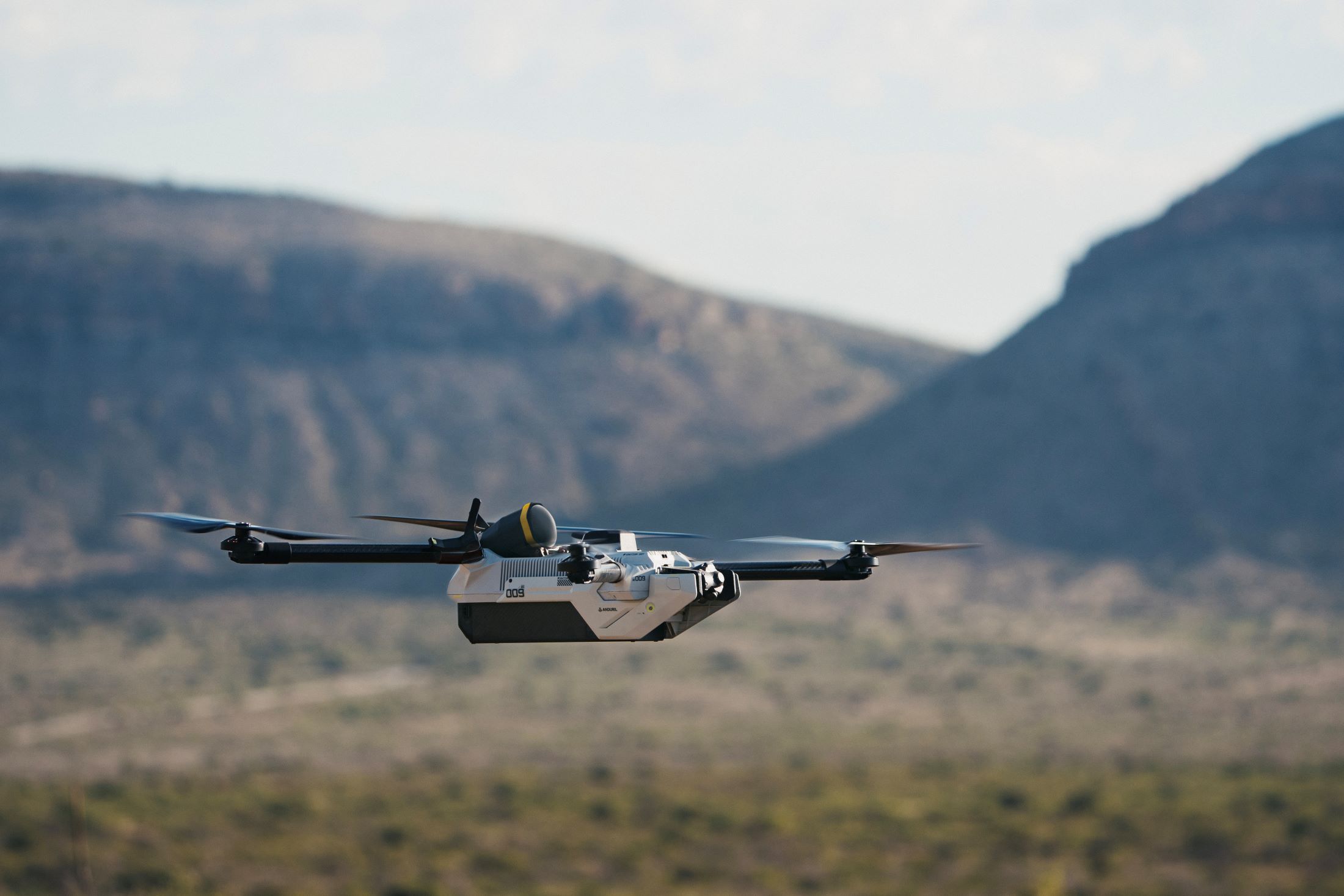
Anduril’s Bolt-M small loitering munition. (Photo: Anduril Industries)
Maintaining a steady drumbeat of new product releases, Anduril Industries on Thursday unveiled its Bolt family of small, man-packable autonomous air vehicles that include surveillance and munition variants, which the Marine Corps is evaluating for its Organic Precision Fires-Light (OPF-Light) program.
Anduril’s commitment to artificial intelligence and autonomy is a key attribute of the new unmanned aircraft systems (UAS), including waypoint navigation and manual control in GPS-denied environments. The goal is to simplify operations by lessening the amount of thinking required for, and training needed by, an operator.
Using the example of remotely guided UAS that are “changing the battlefield” in the ongoing Russo-Ukrainian War to strike targets, Chris Brose, Anduril’s chief growth officer, said these first person view drones require skilled pilots and additional manual support.
“But at the same time, there’s those limitations to scale in terms of expert pilots, other manpower, and really what we’re trying to do with Bolt is make autonomous many of those core functions from the standpoint of a man-packable, AI-enabled strike system that can be very quickly by a single operator, set up, launched,” Brose told reporters on Wednesday.
A user display, be that a tablet, laptop, tactical assault kit, or some other control station gives an operator battlespace awareness and known and unknown targets can be tracked and followed at extended range, and struck based on an operator command, he said. The quadcopter can engage from any angle of attack, allowing it to strike the most vulnerable part of a target, the company said.
In addition to surveilling and striking ground targets, Bolt can be used for counter-maritime and counter-air missions, Brose said, highlighting the lineage to Anduril’s original counter-UAS drone, Anvil, which is a small quadcopter UAS that slams into its target in mid-air.
Bolt, the intelligence, surveillance, and reconnaissance (ISR) variant, and Bolt-M, the munition carrier, are both lightweight, 12.1 pounds for the former, and between 13 and 15 pounds for the latter depending on the explosive payload, which can weigh up to 3 pounds. Some of the capabilities of the vertical take-off and landing (VTOL) UAS include 45-plus minute and 40-plus minute flight times for the ISR and “M” variants, maximum ranges of over 12 miles, flight speeds of around 60 mph, and tool-less battery swapping.
Both variants include Anduril’s AI-based Lattice software system that enables autonomy, pre-flight and in-flight mission planning, and can be used in challenging and contested environments, day and night, Anduril said.
“It’s just now understood that sort of basic table stakes are the ability for those systems, autonomous aircraft, or other systems, to be able to operate in highly contested and often denied communications and electromagnetic spectrum environments,” Brose said of the lessons learned from the war in Ukraine.
Bolt includes a two-axis electro-optical/infrared gimbal seeker, and Bolt-M also features the same gimbal seeker, an optical proximity fuze, and an electronic safe and arm device with safe return to base functionality.
Bolt has been in development for years and Anduril is delivering Bolt-M for the Marine Corp’s OPF-L for testing and evaluation over the next six months. The Marines are also evaluating systems provided by AeroVironment—bidding the tube-launched Switchblade 300—and Teledyne’s Teledyne FLIR segment—offering the Rogue 1 VTOL small UAS—for the loitering munition program.
Anduril is eyeing potential opportunities with the Army for loitering munitions. Brose said the service is “doing an enormous amount of thinking and sort of revising how it thinks” about its requirements for different “sizes and classes” of the lethal unmanned systems. He sees Bolt having the chance to compete in the small loitering munition space, highlighting Anduril’s focus on AI, autonomy, speed, and warhead as differentiators.
Bolt-M is modular and is designed to carry Anduril and third-party warheads for anti-personnel and anti-material attack. The company highlighted that it designed munition payloads with specialized kinetic solutions developer Kraken Kinetics.
A version of this story originally appeared in affiliate publication Defense Daily.